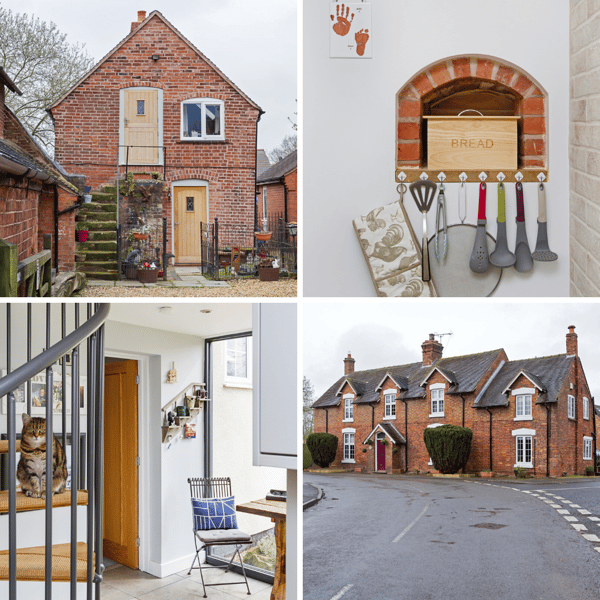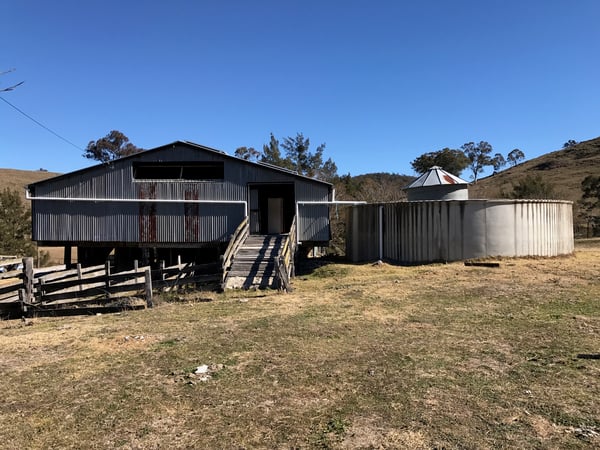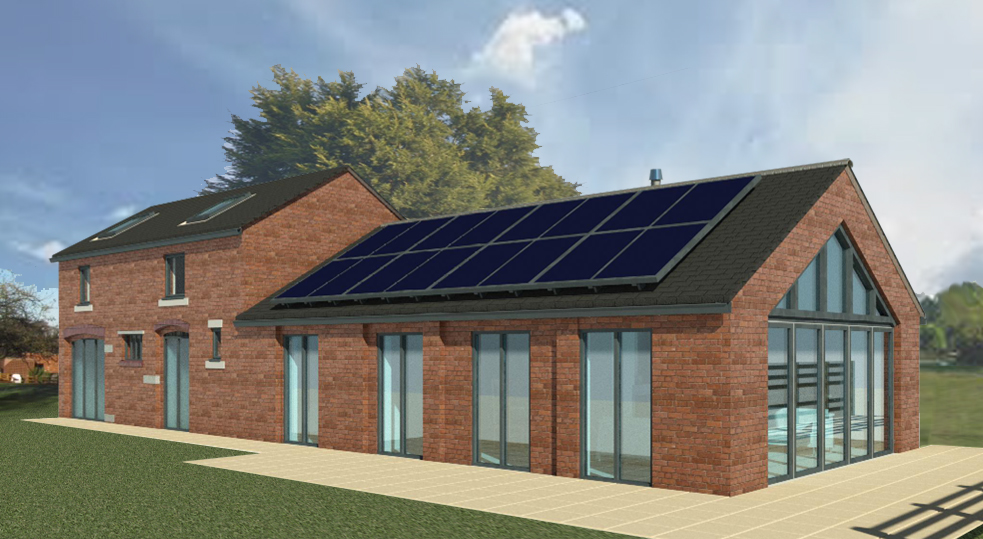
Making the Right Move
We’ve all watched the property programs where families search for their perfect place to call home and struggle to tick all the boxes on their wish list. It’s becoming increasingly difficult for young people to buy a house in the village they grew up in. Rural life is under threat and there is a severe and growing shortage of good quality housing in the UK, especially in more rural areas. These factors are polarising communities, forcing people from the villages in the countryside where they grew up. Our clients, like many young families across the UK experienced a limited amount of choice when searching for property in the rural communities surrounding Stafford.
Like many families throughout the UK our clients were in search of a family home that fulfilled their criteria. After searching for the ideal property, they had many discussion with their parents and they realised that they had the space, land and redundant barns available to develop a new home for their young family.
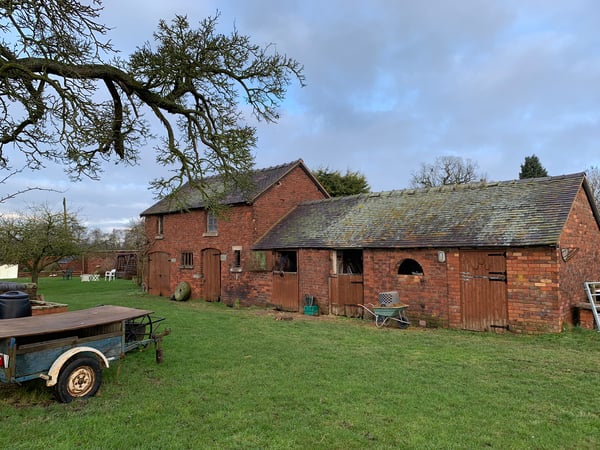 Could multi-generational living be the solution to retaining family life in small rural communities?
Could multi-generational living be the solution to retaining family life in small rural communities?
Once labelled as a granny annex, family accommodation is now known as ‘multi-generational living’. The concept certainly isn’t new and sharing a home with your relatives dates back thousands of years. However, with little out there on market for good quality housing for growing families of the 21st century a solution could be to self-build or adapt an existing property with relatives who have space, land or redundant buildings available. Our clients contacted us to do just this!
We were appointed by our client to help them create a design solution to convert their parents’ historic brick-built barn into a four-bedroom family home. The whole family were motivated to see the barns get a new lease of life, with their aspiration of transforming them into a striking new home that’s within striding distance of their parents’ property. Their aim for the project is to create a multi-generational family hub that offers flexibility for the whole family for years to come. Conversion of the barns will allow the extended family to stay close together, whilst giving our clients the independence they need with their two young children.
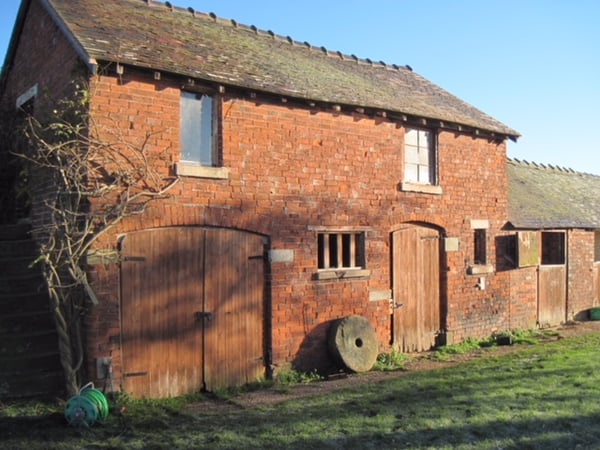 Their parents live in the main house on the site which sits within a generous amount of land along with their old barns. Although the barns are old, they’re not listed, nor is the site in a conservation area. However, the land is located on the edge of a small attractive village in Staffordshire which sits on the cusp of the greenbelt with views to the open countryside on all aspects.
Their parents live in the main house on the site which sits within a generous amount of land along with their old barns. Although the barns are old, they’re not listed, nor is the site in a conservation area. However, the land is located on the edge of a small attractive village in Staffordshire which sits on the cusp of the greenbelt with views to the open countryside on all aspects.
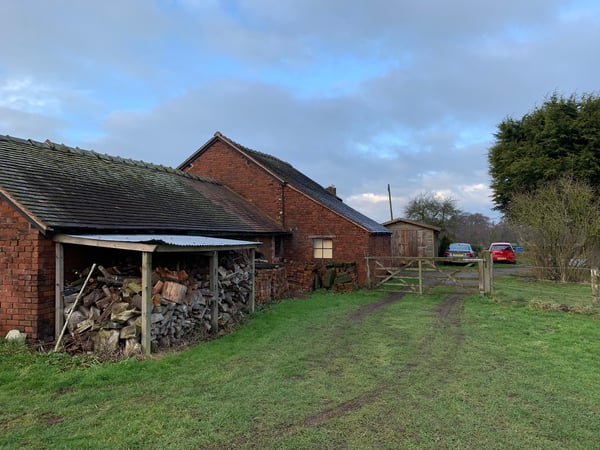 Barn Conversions
Barn Conversions
Barn conversions are one of the most inspirational types of home in the UK, due to the history, the scope for large open spaces and double height spaces and they’re always set in idyllic rural locations.
They consistently maintain a premium price on the property market making them out of reach for many family buyers and buying a barn to convert is not for the faint hearted. Under their romantic rustic charm and lure you’re faced with an almost guaranteed state of dilapidation and problems to overcome.
Converting a barn can certainly be challenging, but also incredibly rewarding. To achieve the desired results the first time it’s so important to get the right advice, guidance and knowledge from an experience architect who will steer a project to success. Our clients did just the right thing and contacted us initially to discuss their ideas and aspirations for the barns. Contacting us at the outset of the project meant that we were able to advise what could be achieved, and how, what consultants may be required to ensure not only planning success but also a safe and successful project.
Our Approach
The existing barn is currently in a poor condition and in need of modernisation and repair. The original first floor is failing, the floor to ceiling heights are inadequate and the ground floors are not to modern standard.
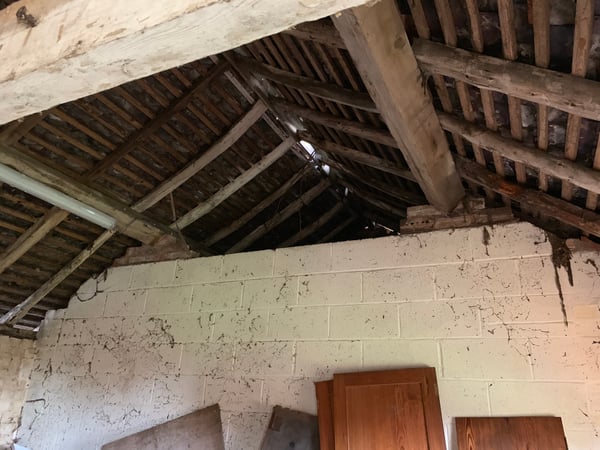 Although the barn is not Listed, or in a conservation area, it is on the edge of the Green Belt. Therefore, our design proposal required careful planning and consideration to sensitively retain and restore the original character, whilst injecting some subtle contemporary details for the young family and to ensure that the building thermally performs.
Although the barn is not Listed, or in a conservation area, it is on the edge of the Green Belt. Therefore, our design proposal required careful planning and consideration to sensitively retain and restore the original character, whilst injecting some subtle contemporary details for the young family and to ensure that the building thermally performs.
We were conscious from the outset that the family required adequate spaces and facilities within the barn to suit a young growing family; yet we needed to respect the original barn by retaining as much of the existing features and openings as possible all within the original building envelope.
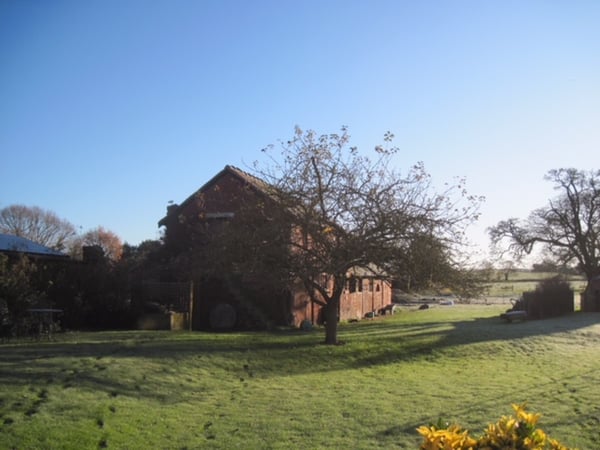 Design Approach
Design Approach
Our design proposal intends to provide the growing family with four generous bedrooms, living accommodation, with private and social spaces to meet the needs of the family. To maximise the outlook onto the stunning countryside surrounding the barn, large bi-folding doors offer views and transition from the living areas out into the garden area.
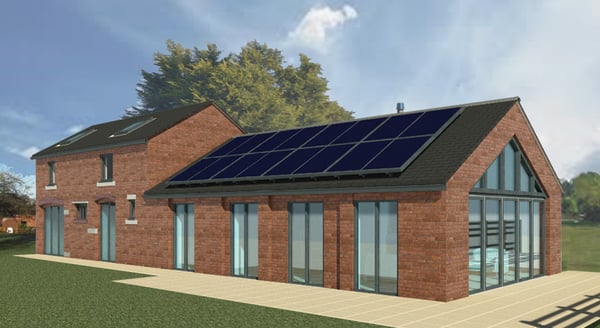 The features of each block will be retained, however, there will be a small up lift in height to the roof of both the double and single storey sections of the barn. The extra height will ensure that the floor to ceiling heights are at the required levels, allow for the roof to be insulated to the required modern standards of thermal performance and to make sure that the pitch is complimentary and in context with its surroundings.
The features of each block will be retained, however, there will be a small up lift in height to the roof of both the double and single storey sections of the barn. The extra height will ensure that the floor to ceiling heights are at the required levels, allow for the roof to be insulated to the required modern standards of thermal performance and to make sure that the pitch is complimentary and in context with its surroundings.
We have incorporated a small infill extension into the design which will create extra space for the entrance hall, fourth bedroom and new kitchen area. The new space is mainly hidden from view and will blend into the existing barn by following the original ridges and by emulating the features of the old barns. The new and the old will be broken by a glazed link entrance which provides a distinct definition between old and new whilst seamlessly creating a new connection.
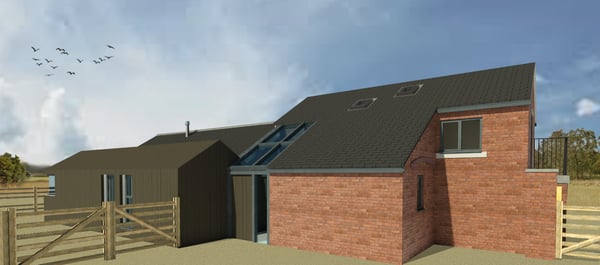 We take the warnings regarding climate change very seriously at Croft Architecture and we endeavour to help our clients to create sustainable buildings that are low-energy or even energy-positive. At the outset of all projects we chat with our clients and discuss the advantages of an energy efficient build.
We take the warnings regarding climate change very seriously at Croft Architecture and we endeavour to help our clients to create sustainable buildings that are low-energy or even energy-positive. At the outset of all projects we chat with our clients and discuss the advantages of an energy efficient build.
Our team and clients wanted to ensure that the new building surpassed the minimum requirements for thermal performance. It’s our intention to create a highly insulated building envelope to maximise the thermal efficiency. SAP calculations will be undertaken to ensure that the building will be designed to last and reduce the amount of energy used, creating financial and environmental benefits.
Natural light plays a key part throughout the new dwelling. We’ve minimised the need for artificial lighting to improve the look and feel of the internal environment. Natural light is so important to our health and well-being. Improving the levels of natural light in your home can trigger natural chemicals in our bodies called, serotonin. The more natural light that we are exposed to the more serotonin we produce. As a result, we feel less sleepy, more energised and less likely to become depressed.
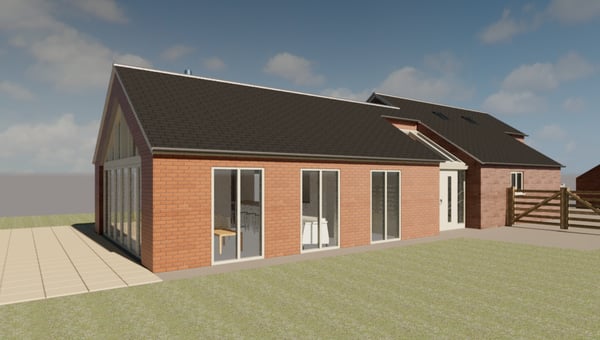 Natural sun light has a multitude of benefits our health and it can also be used to produce clean energy too. We have recommended photovoltaic tiles and ground source heat pumps as options for renewable energy sources. Coupled with an energy efficient boiler and heating system the new smarter technology will significantly reduce the amount of energy they consume and reduce their energy bills.
Natural sun light has a multitude of benefits our health and it can also be used to produce clean energy too. We have recommended photovoltaic tiles and ground source heat pumps as options for renewable energy sources. Coupled with an energy efficient boiler and heating system the new smarter technology will significantly reduce the amount of energy they consume and reduce their energy bills.
The overall design will have a traditional feel through a carefully considered choice of traditional rustic materials with subtle contemporary details that will bring the development a sense of quality. We aim to introduce minimal modern aluminium glazing in the roof and glazed gable elements to flood the new dwelling with natural light and to gain from the solar heat. The proposed extension will be set back from the adjacent elevation and clad in rustic charred timber.
Our design respects the privacy of the existing property on the site. Although the barn and their parents’ home are currently interlinked through their family connection, this may not always be so, and they need to exist as separate dwellings in their own regard. Both families also require their own independence and privacy too. To respect each dwelling’s space, glazing is placed along the elevations and it has been kept to a minimum. The extension is also behind the neighbouring property to ensure that no overlooking occurs.
A close collaboration between the client, the planning officer, the planning consultant and our team has enabled us the deliver a design that retains as much of the original aesthetic of the building as possible. Our aim is to enhance the original barn’s character while giving the family the space they need.
Pre-Planning Approach
To ensure that all aspects of the project remained sensitive and sympathetic to the locality of the site and the existing buildings we appointed an experienced independent planning consultant to assist proposal in a planning policy and regulation context. This then makes it really easy for the planning officer to understand our application and for them to write their report.
Before we submitted the project for planning approval, we engaged with the local planning officer to discuss our design intent for our clients’ project. Being on the edge of the Green Belt we felt that it was important to understand the planner’s perspective on the project and how we could work towards obtaining planning approval on the first submission. Their feedback was valuable to make small amendments to the design aligning it with the relevant policy with had a direct influence on the success of the application. As a result of our close contact with the planning consultant and planning officer during the pre-planning phase this meant that when the plans were submitted for approval the officer received the drawings, plans and documents that they were expecting and they were happy with our proposal.
We’re pleased to bring news that we have successfully gained planning approval for their barn conversion upon the first submission.
Follow their story so far to find out how a rustic gem is soon to be converted into a beautifully converted barn for their family to grow and enjoy the space within easy reach of their extended family.
Happy Clients
We've received this lovely testimonial from our awesome clients on Instagram.
It's always a pleasure to receive feedback from clients and especially whilst their project is still progressing through the stages of work. Thank you to our clients for such a fantastic review.
We place customer experience and satisfaction as a priority so we’re thrilled to hear that they are enjoying their experience with us. The team will definitely be happy to read their kind words. It’s a pleasure working with them to help the family to create a home that works now and for the foreseeable future, oh, and looks fantastic! Thank you. 👍😀
Take a look at what they're saying below.
Barn And Other Agricultural Conversions
Our team have the expertise and experience to help you navigate the intricate details of permitted development rights for barns and agricultural building conversions. All projects vary depending on the location, size and complexity.
Navigating the planning rules around barn conversions can be a difficult task. In 2014 the Government attempted to ease the restrictions on converting barns in the countryside (in England) through the introduction of ‘Class Q Permitted Development’. Unless your project is extremely simple you should talk to an experience architectural team before you embark on your project.
Whether you are considering a project which involves a traditional barn or maybe a former agricultural buildings, our team at Croft Architecture have considerable experience. We’ve undertaken design and management projects on varied barn and other agricultural building conversions and we've worked on a project in Australia too – take a look at the results below.
A Contemporary Barn Conversion For Multi-Generational Living
Sensitively Restored Grade II Listed Farmhouse And Barns
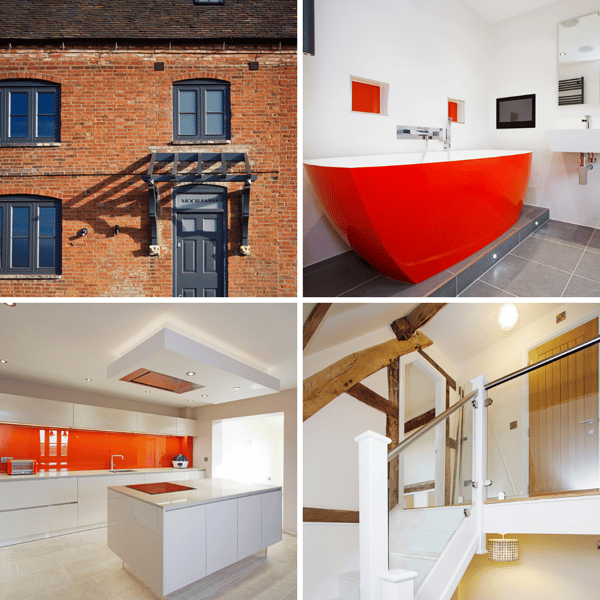
Planning Permission For Change Of Use
Conversion Of A Former Sheep Sheering Shed For Residential Use
Planning Success For Luxury Homes On Farmland

These are just a sample of the clients we've helped over the years. If you would like to discuss a barn or agricultural building conversion with us, get in touch on 01785 248542 or use the form below…
Contact Us


